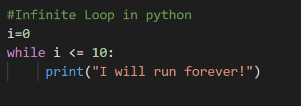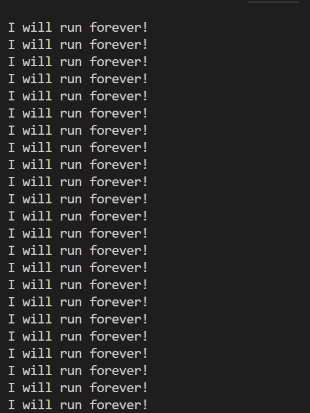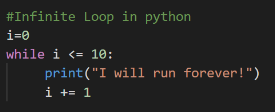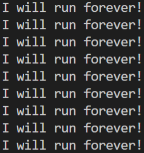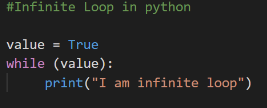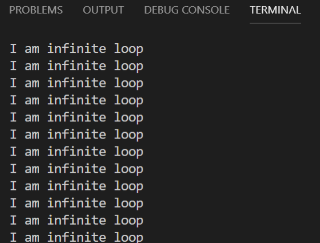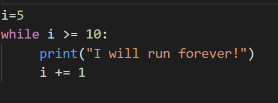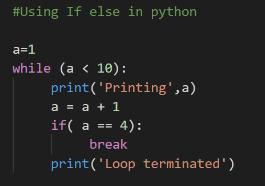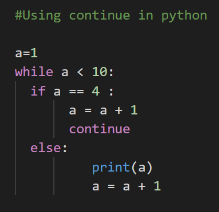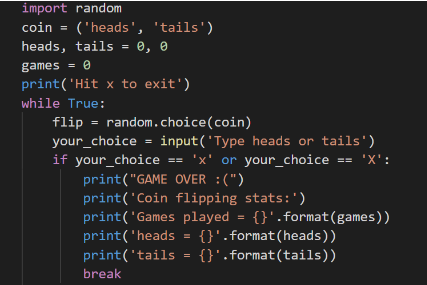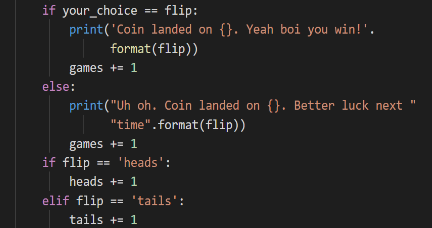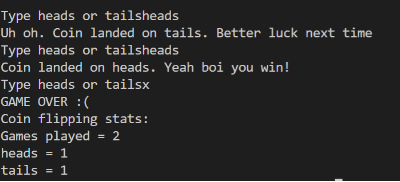
Introduction to Python Infinite Loop
An Infinite Loop in Python is a continuous repetitive conditional loop that gets executed until an external factor interferes in the execution flow, like insufficient CPU memory, a failed feature/ error code that stopped the execution, or a new feature in the other legacy systems that needs code integration. A few types of Infinite Loop in Python include the While statement, the If statement, the Continue statement, and the Break statement.
When are Infinite Loops Necessary?
An infinite loop may be helpful in client/server programming, where the server needs to run with continuity so that the client programs may communicate with the server program whenever necessary. It may also be helpful if a new connection needs to be created. There is the utility of a while loop in a gaming application or an application where we enter some main event loop, which continues to run until the user selects an action to break that infinite loop. Also, if one has to play a game and wishes the game to reset after each session. Iterations are the process of doing a repetitive task, and computer programs have always mastered this art.
How would we Run an Infinite Loop by Mistake?
It is a very simple program, but noobs may surely miss out on these basic steps and have an infinite loop running in their program.
Code:
As there is no code to increment the value of the integer, it will continue to print that until we terminate the program.
Output:
So, to avoid the unintentional loop, we add the following line to the code.
Code:
And then, the output prints the definite number of lines, as shown below:
Code:
Types of Statements in Python Infinite Loop
Below are the different types of statements in Python Infinity Loop:
1. While Statement in Python Infinite Loop
Loops are compelling and essential, but an infinite loop is the only pitfall. Python has two types of loops, only ‘While loop’ and ‘For loop.’ While loop works precisely as the IF statement but in the IF statement, we run the block of code just once, whereas, in a while loop, we jump back to the same point from where the code began. Thus repeating itself until a condition is fulfilled. As we know that loops are infinite or conditional. Python while loop, keeps reiterating a block of code that is defined inside of it until a specific desire is met. The while loop in Python relies on a Boolean expression and continues executing the code inside the loop as long as the Boolean expression remains true.
Syntax of While Statement:
while(expression)
statement(s)Code:
Output:
As we can see above, the while loop will continue to run until the Boolean expression is TRUE. It’s important to note that the statements executed after the while loop can consist of either a single line or a block of code comprising multiple lines. There is one thing that has to be clearly understood. The while loop in Python uses entry control, so it does not run if the initial test condition is false.
Code:
The above expression is false; nothing will be executed in the output.
2. Using IF statement with While loop
We can impose another statement inside a while loop and break out of the loop. Python control statements such as ‘break’ and ‘continue’ can be utilized. The break is used as a Python control statement, and as soon as it is encountered, it skips the whole block’s execution. We can use the if-else statement and use the break keyword to come out of the while loop even before completing the condition of the while loop.
3. Using Break Statement
Below is an example that will illustrate the above:
Code:
Output:
Thus, we observe that the program flow jumps out of the loop before completing the 10th iteration, while the console displays the termination of the loop.
4. Using Continue Statement
Continue is used as a control statement. As soon as the continue is encountered, the current iteration gets skipped.
Code:
Output:
The output displays numbers printed from 1 to 9, excluding 4, due to a condition in the program that skips printing when the number is 4. The program skips that iteration and continues as long as the while condition persists.
Heads or Tails Game
Below is an example of a coin toss game in Python, created with the WHILE loop’s help. Here is a text-based game or another example of how to use a while loop. We are importing a random class here and also using the input() function for the user to read the input. It is just a simple simulation of the flipping of the coins. We will prompt the user to enter either ‘heads’ or ‘tails.’ We will apply simple game statistics by summing up the consecutive number of heads and tails.
Code:
Output:
The final output that we receive after inputting the values ‘heads’ or ‘tails’ is as follows:
Code:
In the code snippet, we see that the random class generates the random values either ‘head’ or ‘tail’ as we have given the options above and stores them in the flip variable. Therefore, when the user’s input matches that with the value in flip, one wins; another loses, and the while loop keeps running till then. The program will have an exit condition if the input is ‘x’ or ‘X.’ In such cases, it will print the calculated value of the iteration. This simple illustration of a text-based game using a while loop.
Conclusion
As humans find repetitive tasks boring, those tasks are pretty susceptible to human error. Thus, iterations programs have utilities and are great helpers in many applications where a loop must run infinitely until someone interrupts it. You can create many simple text-based games by using a while loop. Moreover, to enhance your Python knowledge, you may also consider enrolling in a Python course. However, look for a structured training that delves deeper into Python language and its applications.
Recommended Article
This is a guide to Python Infinite Loop. Here we discuss the introduction, types of Statements, and code implementation. You can also go through our other suggested articles to learn more –

